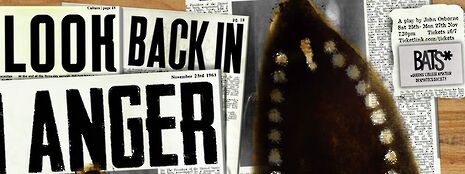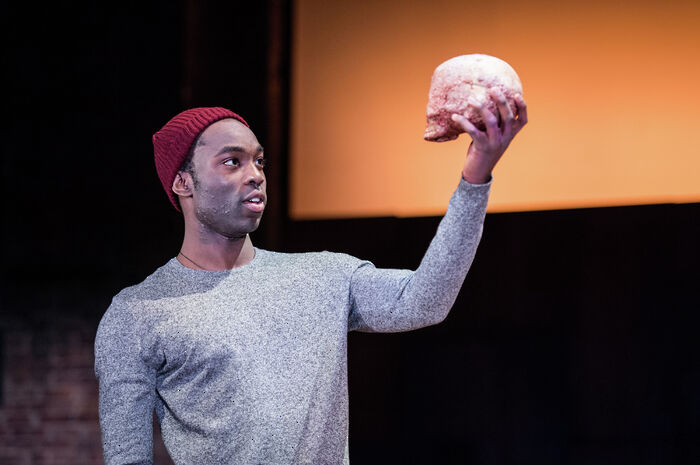Review: Look Back in Anger
Elizabeth Huang writes that Look Back in Anger is “well-performed, well-directed and well-executed”

Look Back in Anger is not a short play, at least by Cambridge theatre standards. With a running time of 165 minutes, it requires a serious commitment of both your evening and attention span. Sophie Scott’s production does a commendable job of it, though there were times when I found myself drifting into unwelcome thoughts about this week’s unwritten essay. The play, mirroring its content, is one of incomplete and imperfect connections – at times electrifying and thrillingly explosive, and at others a flickering bulb that fails to illuminate the farther corners.
“Great emotional delicacy and an intuitive feel”
We open with a pleasant domestic scene. The ironing is out, the weekly papers are being read, and the dirty (and I mean really soiled) marital laundry is being aired with great panache. Both the set design (by Ciaran Walsh), with its sensitive sense of depth and control of space, and costumes (by Alistair Henfrey) are excellent. Tom Hilton (Jimmy), Ben Lynn (Cliff) and Ella Blackburn (Alison) make a great trio, whose dynamic interplay offers some of the strongest scenes in the play. Lynn is particularly good – navigating scenes with great emotional delicacy and an intuitive feel for his character.
From this jolly starting point, the play descends into convincingly vitriolic nastiness, as tensions of all kinds reach boiling point. The production does best in the personal arena, where the characters prepare to do battle on questions of family allegiances, the meaning of love and the impact of loss. Jimmy and Alison’s outbursts are (in their best moments) powerful and devastating. Those coming to the play in search of a searing critique of class and social power, however, are likely to leave dissatisfied. Jimmy’s incandescent anger fails to convince in its institutional and societal dimension.
“The play is performed with relish and is convincingly realistic”
We close with a pleasant domestic scene. But, oh! What’s this? We’ve switched women. Helena (Claire Burchett) – confusingly ironing a pullover – proves to be the most difficult character in Look Back in Anger. Played rather flatly (whether deliberately or not), her actions feel inscrutable, almost inexplicable. It is difficult to judge whether this is simply an inherent weakness in the script, but I found myself struggling to take her seriously as a purposive agent in the world of the play.
My major gripe, however, is reserved for the uneven energy and pace of the production. Like any rollercoaster, problematic relationship or horror film, one expects the ratcheting tension to be followed by an oasis-moment of calm or conciliatory tenderness. This never quite happens. While the titular anger of the play is performed with relish and is convincingly realistic, the quieter moments feel insufficiently different. Hilariously, the best tension-defusing moments come with the melodramatic and brilliantly timed intrusions of Jimmy’s trumpet (not, thank god, a euphemism) into the later scenes. The anger of the play would be sharpened if its negative space were more clearly defined – Jimmy and Alison’s scenes sometimes feel too smooth – without the raw and radical tenderness that would do justice to their corresponding rage.
Should you go to see Look Back in Anger? Yes, I think so. Minor criticisms aside, it is well-performed, well-directed and well-executed. For a play about public and private dislocation, this production does a praiseworthy job of presenting a performance grounded in thoughtfully-interpreted characters and a generally satisfactory sense of gritty realism. The play improves throughout and the ending is truly excellent: raw suffering and (finally!) authentic gentleness combine beautifully to form a poignant tableau of failed human relationships in a fractured society
 News / Cambridge study finds students learn better with notes than AI13 December 2025
News / Cambridge study finds students learn better with notes than AI13 December 2025 Features / Should I stay or should I go? Cambridge students and alumni reflect on how their memories stay with them15 December 2025
Features / Should I stay or should I go? Cambridge students and alumni reflect on how their memories stay with them15 December 2025 News / Uni Scout and Guide Club affirms trans inclusion 12 December 2025
News / Uni Scout and Guide Club affirms trans inclusion 12 December 2025 Comment / The magic of an eight-week term15 December 2025
Comment / The magic of an eight-week term15 December 2025 News / Cambridge Vet School gets lifeline year to stay accredited28 November 2025
News / Cambridge Vet School gets lifeline year to stay accredited28 November 2025









